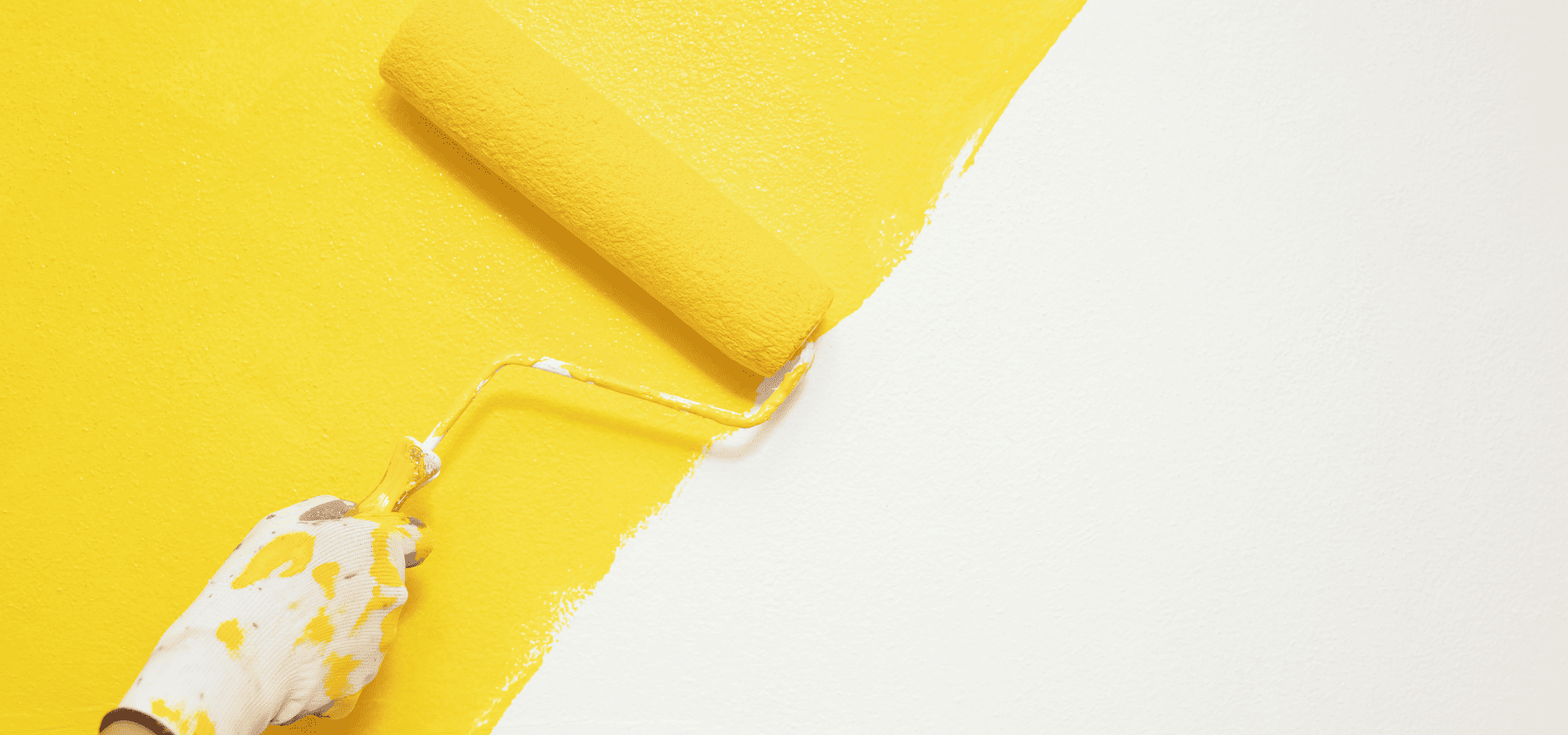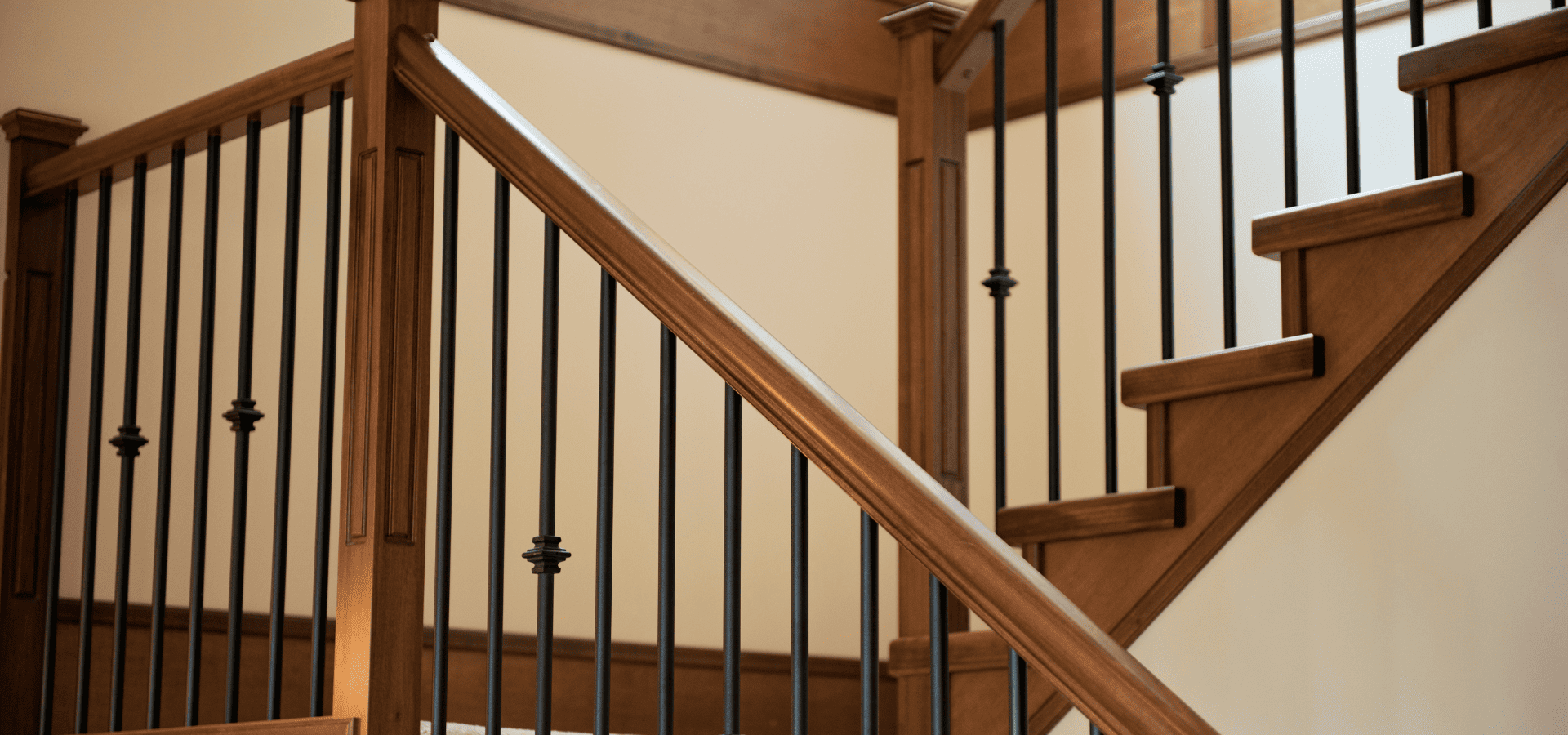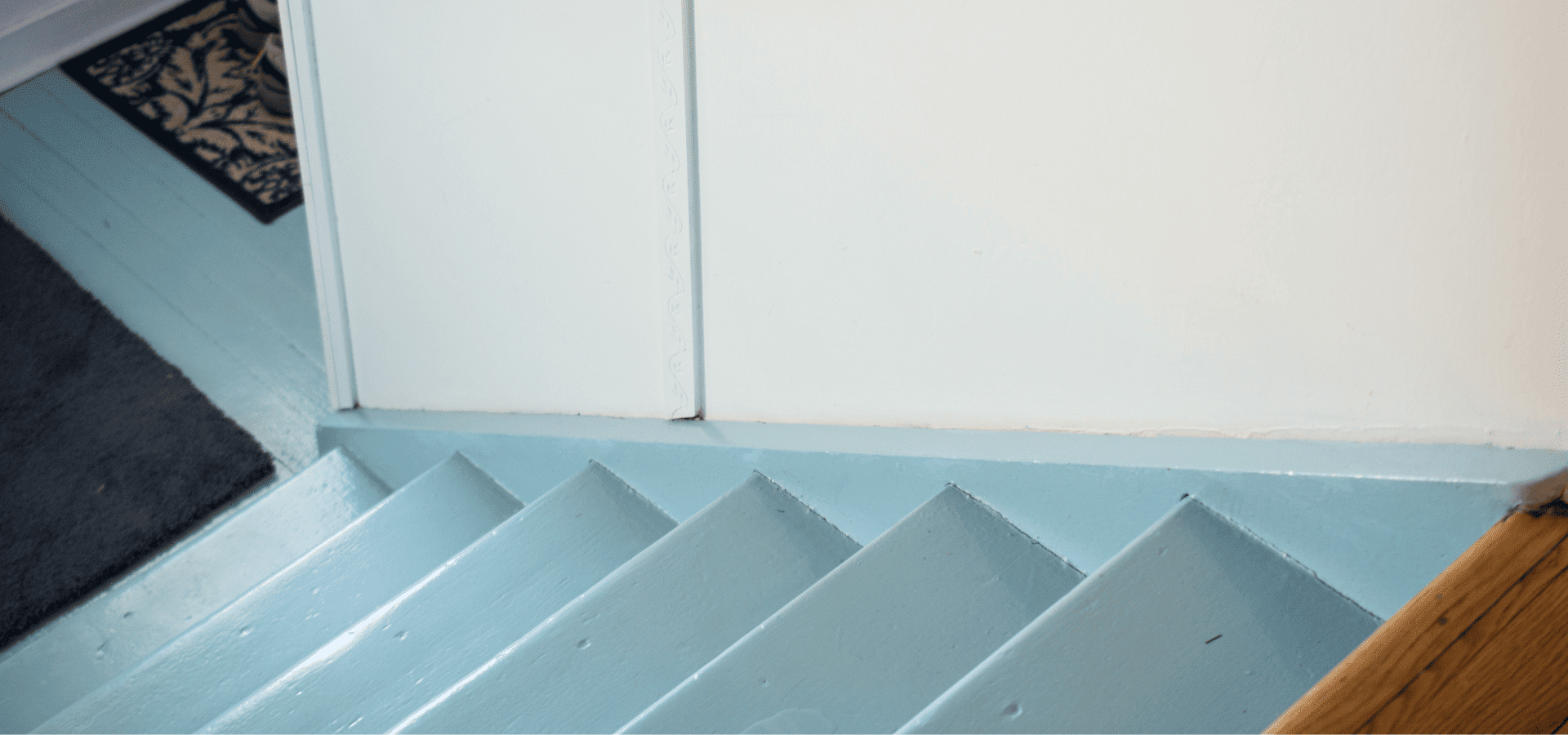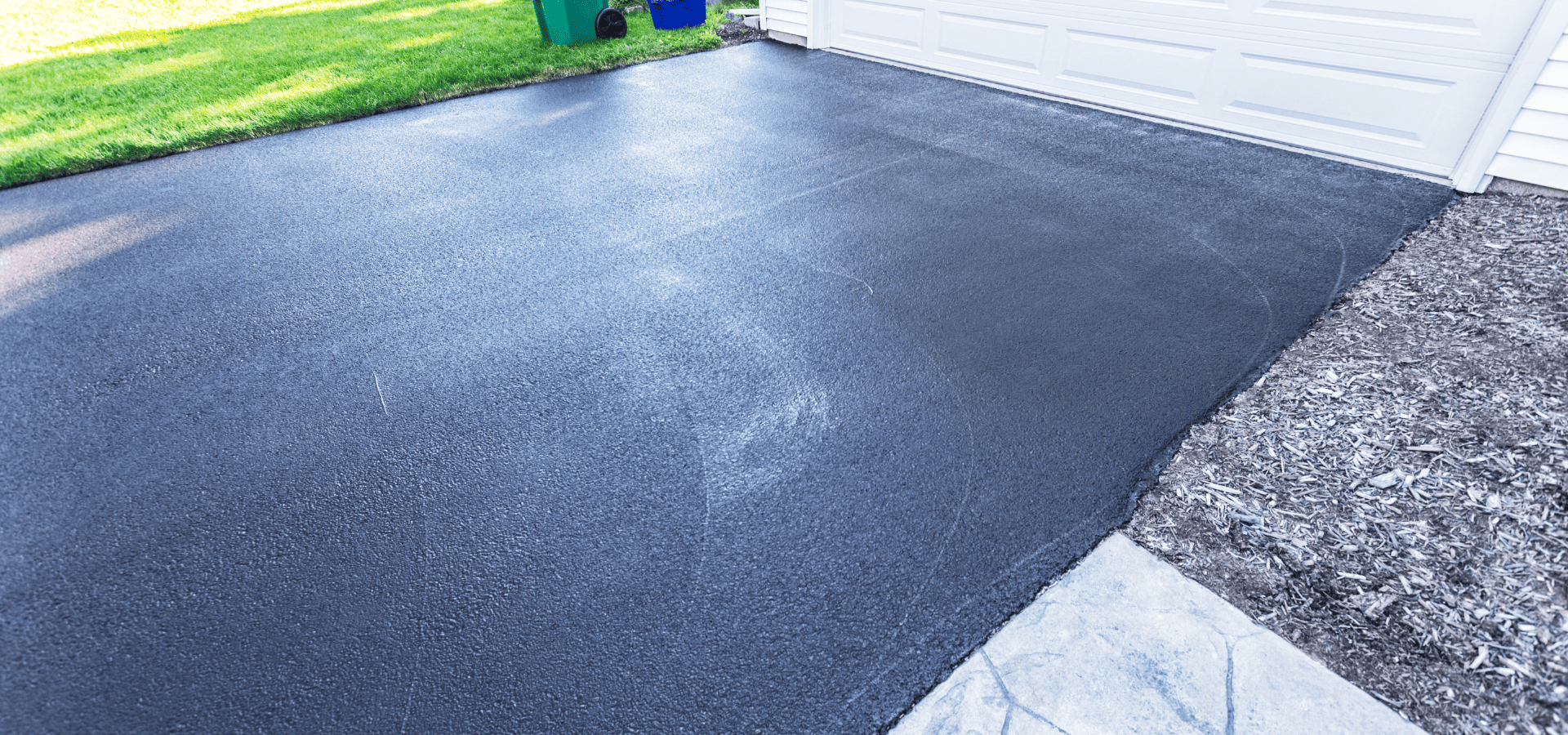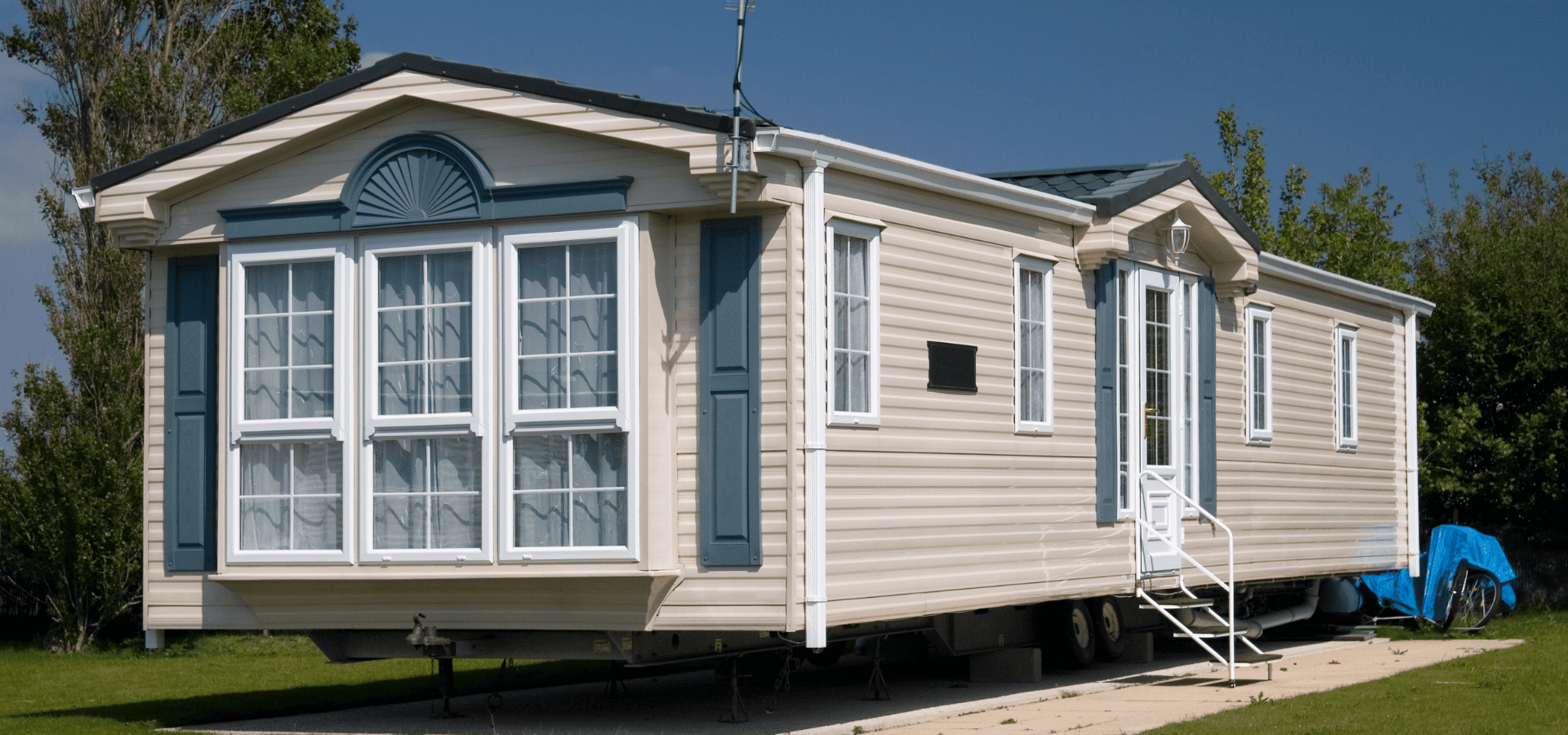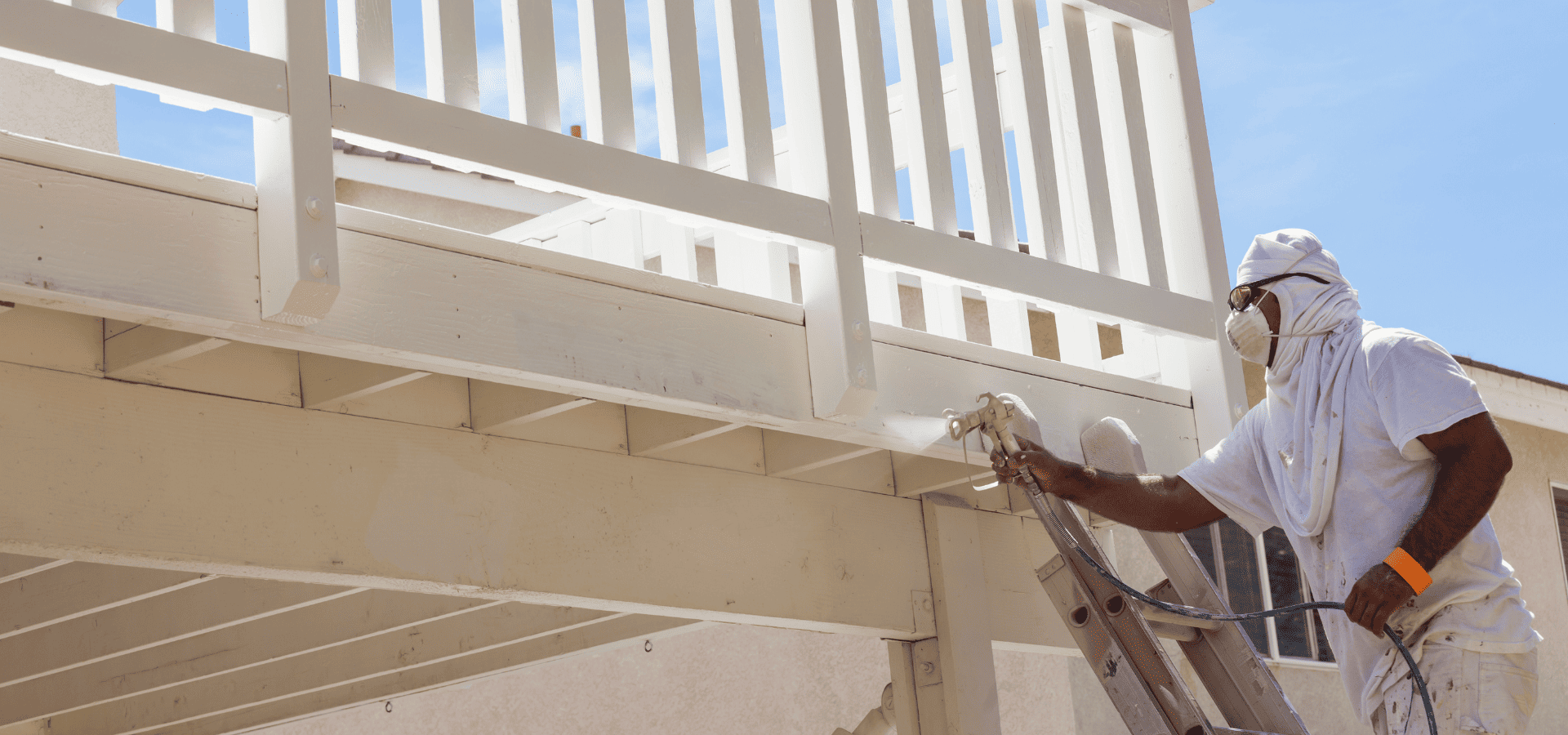How To Dispose Of And Recycle Leftover Paint Safely

Nobody ever buys just the right amount of paint to use, unless they're really really lucky.
In most cases, you'll end up with some leftover (or a little short if you're unlucky).
What most homeowners do when they have leftover paint is usually to just store it away, and that's a smart move, because you may need it later on for touch-ups, repairs, or color matching.
The problem is, a lot of times, after a year or two, when they eventually have need of the paint again, it's separated, crusted, or unusable.
This is often because they didn't store it properly, but it could also be because it's past the shelf life of the paint.
Whatever the case, knowing how to dispose of paint you no longer need or can use is important, because improper disposal can not only be very harmful to the environment, but is also illegal in some regions.
If you're wondering why something as seemingly harmless as disposing of paint can be illegal, that's because it's not harmless,
far from it.
We'll go deeper into their dangers later on, but for now, you just need to know that they can be extremely dangerous if you just casually throw them into bins.
And if you still choose to go ahead with improper disposal, you risk facing fines of hundreds to thousands of dollars, being liable for cleanup costs, and even being criminally charged.
So don't just chuck your unused paint into the bin. Here's what to do instead.
Why Proper Paint Disposal Is So Important
Starting with the environmental effects, when you pour paint down drains, it can clog up pipes and disrupt wastewater systems. They won't be filtered out by wastewater systems either, since these systems aren't designed for paint, so your paint will get past these systems and go into waterways.
Through these waterways, they then flow to rivers, lakes, and oceans, harming aquatic life and contaminating drinking water.
That’s not all though. As if environmental damage wasn’t bad enough, improper paint disposal can also severely wound workers who’re working around it.
In the best case, workers may only inhale the VOCs and experience symptoms like headaches, dizziness, and nausea.
But in the worst cases, since paints and thinners are flammable, when mixed with hazardous waste like batteries, they can easily ignite or even explode, especially under heat and pressure in compactors, landfills, and trucks.
This is exactly why it’s illegal to dispose of leftover paint without taking the proper steps first. You could end up costing people their lives or causing huge fires to break out.
It’s also why the punishment for unsafe paint disposal can be quite severe, ranging from fines of hundreds of thousands of dollars, to even imprisonment.
These punishments may seem severe just for throwing a can of paint away, but they’re necessary to deter the unthinkable harm that could happen from that mere can of paint.
How To Not Waste Paint

First off, before we get into disposal and recycling, let’s go over ways to not waste paint, so that you could potentially not have to dispose of anything and not waste any money at all.
Minimizing waste starts from the beginning. When purchasing paint, many homeowners will overbuy by a gallon or more to be safe, and that’s not wrong.
The last thing you want is to run out of paint halfway, so it’s totally fair to buffer some extra.
However, keep it to a gallon. A gallon of paint is more than enough buffer, even if you’re painting a large room. Anything more than that will very likely never be used, and will only end up as paint wastage.
After the painting is finished, as we mentioned at the start, the majority of the time, you’re going to have at least a little paint left.
At this point, it’s a good idea to set aside a little leftover paint for future touch-ups and repairs, but there’s no point in putting aside too much, because realistically, you’re probably not going to need to do many touch-ups and repairs. Just 8-16 oz should more than suffice.
If you only had a little left, then you can set all that aside for future needs. But for most people, even after putting this little bit aside, they’ll usually still have some more paint left.
So what happens to the rest?
Here are your two main options.
Option 1: Use It For Other Projects
Assuming the color fits, here are some other projects you can consider using your leftover paint for:
- Accent Walls or Feature Panels: Use your leftover paint to add a pop of color to a small wall, niche, or alcove
- Doors, Trim, Baseboards, & Window Frames: If you have enough leftover, you can use it to repaint your doors, trim, window frames, or baseboards to give them a brand new look.
- Furniture Makeovers: You can also give your furniture new life by repainting them. This could be your old dressers, bookshelves, side tables, etc.
- Existing Touch-Ups & Repairs: Look around your home and check if any areas need touching up or repairing.
We’ve listed some more common use cases, but this list could go on and on. You can use your leftover paint anywhere, as long as the color fits and the surface is suitable for latex paint or whatever paint type you’re using.
You could even use it for canvas painting or your child’s school project.
Option 2: Donate It
If you’re not using your paint and don’t want to just dispose of it or recycle it, why not donate it somewhere where it could be put to better use?
We’re not asking you to go knocking on your neighbors’ doors and start asking every one of them whether they want it. Chances are, your neighbor probably won’t need that exact shade of paint you have at that exact point in time.
But if you’re offering it for free, most people would be more than happy to take it — and then leave it untouched for the next few years.
Instead of that, here are some places where your paint would likely be needed and well-appreciated:
- Community centers
- Schools (for their art programs)
- Theater groups
- Youth clubs
- Habitat for Humanity ReStores and similar non-profits
Just make sure that you’re donating usable paint in good condition.
How To Recycle Paint
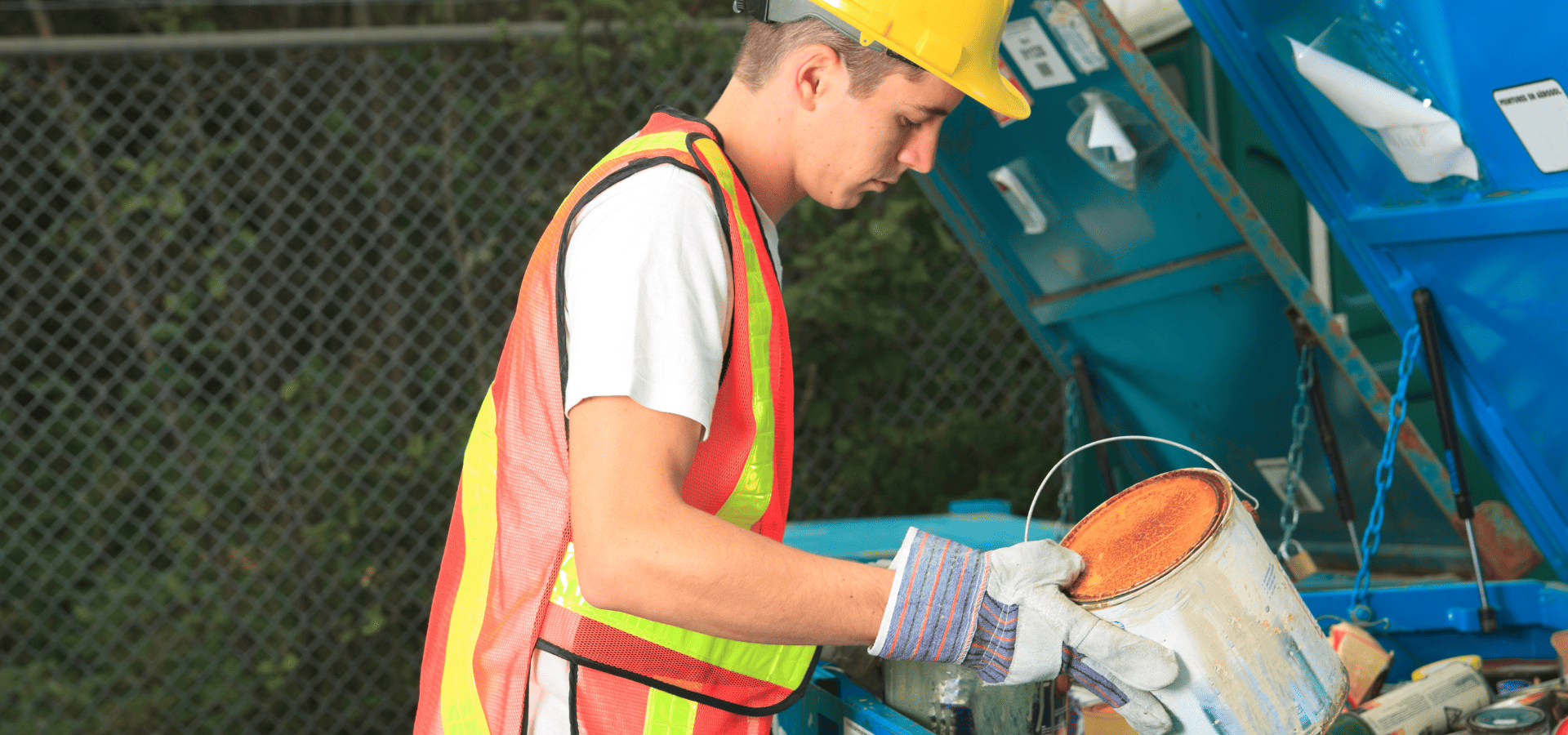
There are many reasons why people recycle paint instead of donating. This could be because:
- You couldn’t find anywhere suitable to donate
- You don’t have enough left to donate (certain donation outlets have minimum paint amounts for donation)
- Your paint isn’t in the best condition
- Your paint isn’t latex paint (most schools and donation programs won’t accept oil-based or solvent-based paints due to health concerns)
- You just don’t want to go through the trouble of going to various donation outlets
Whatever the reason, if you’re looking to recycle paint, here’s what you need to know.
Recycling paint is the same as recycling anything else. You make sure it’s in a state to be recycled, meaning it’s still liquid (doesn’t need to be in tip-top condition, but has to at least be liquid) and in the original container, and you drop it off at the recycling site.
The thing is, you can’t just drop off your paint at a normal recycling bin. Paint recycling is a very different process from normal recycling materials, so it needs to be a dedicated paint recycling outlet.
To recycle paint, it needs to go through the following process:
- Collection & Inspection: Paint is collected at drop-off sites, then inspected to check if they’re still usable and not contaminated.
- Sorting: Next, they’re sorted by their type (water or oil-based) and color.
- Processing: Then, they go through a round of processing, where they’re blended together, filtered to remove contaminants, and finally tested for quality and performance.
- Re-Tinting (Optional): Before they’re ready for use again, they may or may not be re-tinted to standardize the color.
- Packaging & Redistribution: The final step is to package the now ready-for-use recycled paint into new containers, where they’ll be labeled “Recycled Paint”. They’re then either sold at discounted prices or may be donated to community groups, non-profits, and public agencies.
As you can see, the paint recycling process is a highly specialized one, and normal recycling centers just lack the equipment and expertise to properly recycle paint.
Now, depending on the state you’re in, it may or may not be easy to find a recycling program.
Currently, the largest paint recycling program in the US is PaintCare, which is a stewardship program.
PaintCare
A product stewardship program is a system in which manufacturers take responsibility for ensuring the proper end-of-life management of their product, which in this case is paint.
So wherever PaintCare operates,
all paint manufacturers in that area must help fund it by paying a small fee for every container of paint sold
That fee is built into the price of the paint, and you’l sometimes see it on your receipt labeled as the PaintCare fee. This amount typically ranges from $0.65 to $0.95 for 1-2 gallons, but goes up to $1.35 if you’re residing in Vermont.
Here are the areas that PaintCare operates in:
- California
- Colorado
- Connecticut
- District of Columbia
- Maine
- Minnesota
- New York
- Oregon
- Rhode Island
- Vermont
- Washington
PaintCare is also going to be launched in Maryland and Illinois, but they’re not active as of this moment.
If you reside in the listed areas, you’re in luck. All you need to do is bring your recyclable leftover paint to any PaintCare drop-off location. Drop-off is free of charge since it was already factored into your purchase price.
To find a drop-off site, use PaintCare’s
drop-off site locator tool. This will usually be a participating paint or hardware store.
Do note that some locations may have quantity limits, so if you’re bringing more than a few gallons, you should call in to check if they’ll accept that.
If your region doesn’t have PaintCare though, here are some other options.
Household Hazardous Waste (HHW) Programs

Almost every state has a HHW program, BUT not all paints are hazardous.
The main purpose of HHW programs is to ensure safe hazardous waste handling, which does include oil-based paint and spray paint, but not latex paint.
That said, some HHW programs do accept latex paint.
If your latex paint is recyclable, they’ll then either send it to paint reprocessors to turn it into new recycled-content paint, or give it to reuse programs, non-profits, and public agencies.
And if your paint isn’t recyclable, they’ll help you safely dispose of it.
Non-Profits & Community Reuse Centers
You can also donate them to non-profits and community reuse centers.
This ties in with our point earlier on donating to not reduce wastage, but the difference here is that if your paint is recyclable, but not in good enough condition to be usable, these outlets can help you send it to paint reprocessors.
It’s not a guarantee though. These outlets often reject unusable paint, but there are some that do help you recycle them, so always call in advance to check.
Hardware Stores
Like with non-profits and community reuse centers, certain individual hardware stores may help you recycle paint as a local service, but it’s not guaranteed, and you might need to pay a small fee.
How To Dispose Of Paint
If you’ve already gone through the options above and still have leftover paint, or maybe your paint is already unusable and needs to be disposed of, here’s how.
Disposing Of Latex Paint
Latex paint is generally much less dangerous and toxic than oil-based paint, but it can still clog pipes and affect wastewater systems.
As such, you need to dry it up before throwing it away.
For smaller amounts, all you have to do is leave it in a warm, ventilated area and ensure the lid is off so that it’s exposed to the open air. Small amounts will dry in a few days or weeks, depending on the thickness.
For larger amounts, you’ll need to mix in kitty litter, sawdust, shredded newspaper, or sand, and then stir until the material is evenly blended. These will absorb moisture and help your paint dry more quickly.
Then, just let your paint sit until it’s fully hardened.
If you want an even faster solution, you can also use paint hardener packets, which, as the name suggests, are designed to harden paint quickly.
Just get them at your local hardware or paint store, and follow the label instructions. Paint hardener packets can solidify a full can of latex paint in under an hour!
Once your paint is dry and hardened, you can safely dispose of it. But even then, there may be local regulations to adhere to.
Your state may require that you label it “Dried Paint”, or you may even need to bring the dried paint to a designated drop-off point. Make sure to read up on your local regulations.
Either way, you should always leave the lid off so that waste collectors can verify that it’s dried and hardened.
Disposing Of Oil-Based Paint
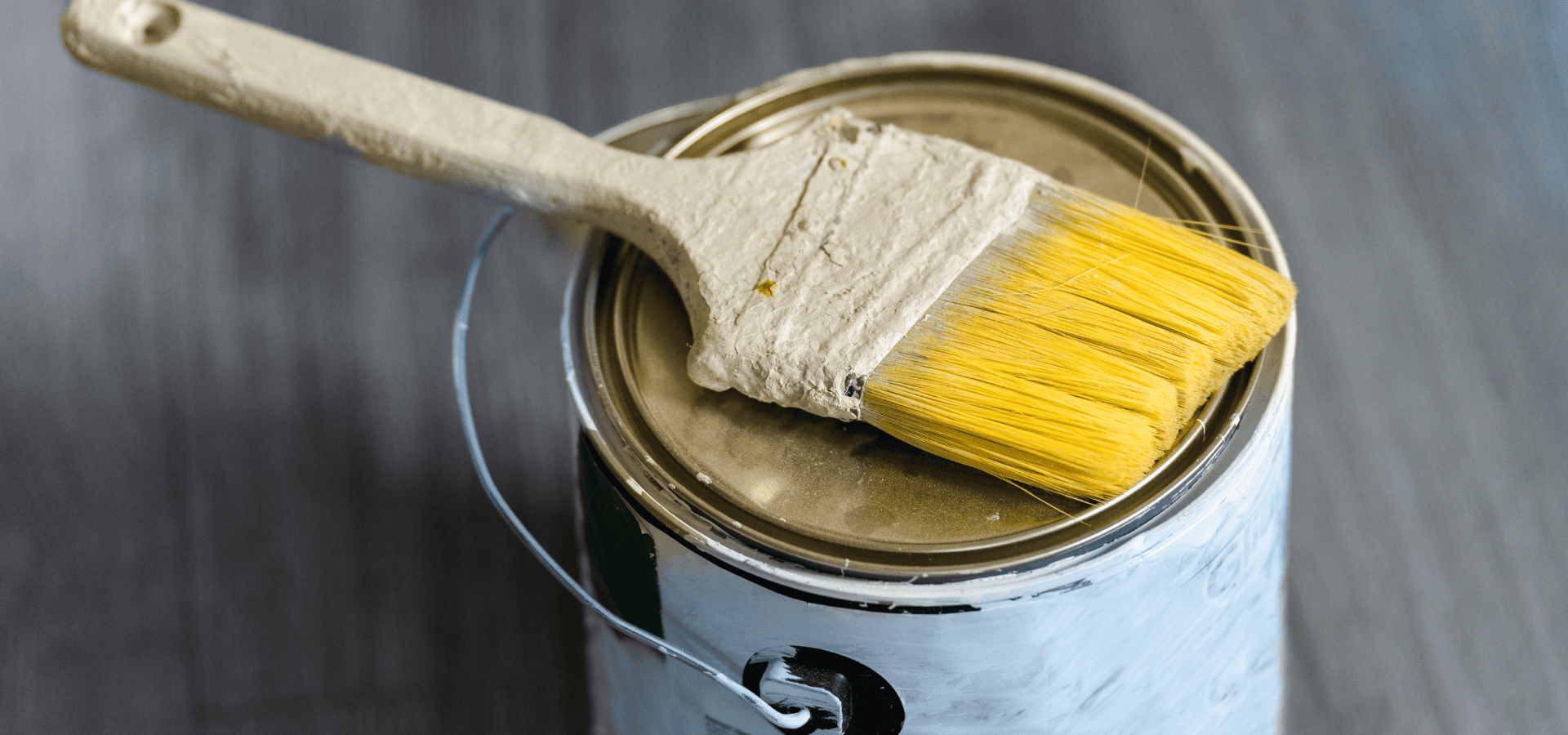
Oil-based paint is classified as hazardous waste in all US states, so your only disposal options are your local HHW program, or PaintCare sites if they’re operating in your region.
Take note that PaintCare won’t recycle oil-based paint; they’ll usually just help you dispose of it safely.
When you’re going to drop off your oil-based paint, keep it in its original container with the labels intact, and when you’re transporting it to the drop-off point, ideally, put it in a leak-proof box. If not, make doubly sure that it doesn’t leak on the way there.
Oil-based paints are a fire hazard and they’re toxic, not to mention the clean-up hassle, so you don’t want them to leak either way.
Ending Tips
With that, you now know how to safely and properly dispose of and recycle paint.
Before we end off, here are some final tips.
When you’re storing your paint, you don’t want it to quickly dry up or become unusable, so you need to store it properly to ensure it stays in good condition for as long as it can.
When you’re storing your paint, wipe the rim clean first before you cover it up, as residual paint can create tiny air gaps.
Then, place plastic wrap over the opening before covering the lid over. The plastic wrap will fill microscopic gaps caused by rim imperfections, and it also makes the lid easier to remove, because the paint might glue it tight otherwise.
Lastly, store your paint in a cool, dry, temperature-controlled room, ideally somewhere indoors in your home, away from direct sunlight. Avoid garages and sheds, even if they’re the most convenient.
Make sure to also label the container clearly with the paint color, date used, and which room or area you used it for. This will help you track whether the paint is over its shelf life, and if you ever need to perform touch-ups and repairs, find the right paint easily.
Remember, your painting project isn’t over once you’re done with the painting. Proper storage and waste management are essential to protect the environment and ensure everyone’s safety.
Recent Posts
